- Home
- Encyclopedia
- Watering a Dry Land: Wyoming and Federal Irriga...
Watering a Dry Land: Wyoming and Federal Irrigation
Partly to further Thomas Jefferson’s ideal of America as a nation of small farmers who own their own land, Congress passed the original Homestead Act in 1862. The law offered free land from the public domain to anyone who would live on it and work it for five years.
But because tracts were limited to a maximum of 160 acres, the measure proved impractical in the arid West: 160 acres was simply not enough to support a family in places like Wyoming where fewer than 15 or 20 inches of rain fall per year.
A further impediment to homesteading was the division of land into grids of six-mile-square townships made up of one-mile-square sections, a pattern established by the 1785 Land Ordinance, passed by Congress before the Constitution even existed. The ordinance made no allowances for the huge variety in the lands’ topography, fertility—and aridity.
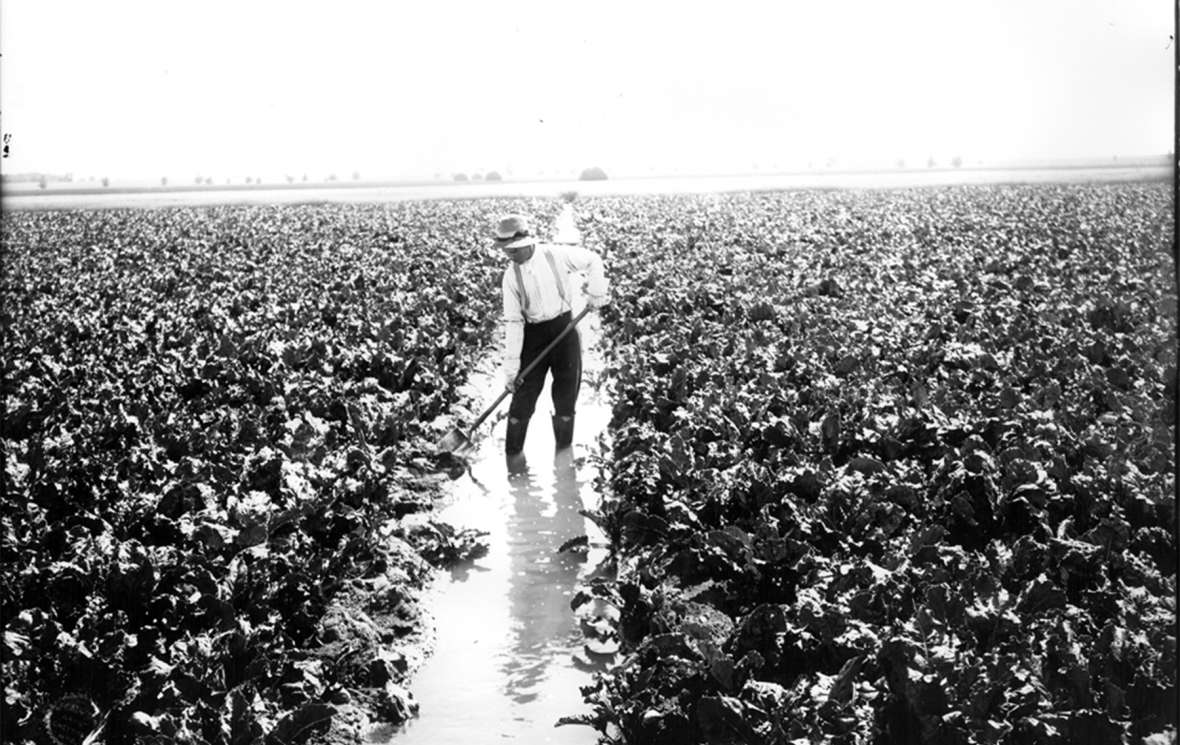
In fertile, relatively flat areas of the Midwest, the system worked reasonably well. Regardless of proximity to rivers or streams, homesteaders could farm in areas where precipitation was the primary source of water for crops. Not so in the arid West, where success in any form of agriculture required proximity to watercourses.
Passage of the Timber Culture Act in 1873, which offered free land in 160-acre parcels to anyone who would plant trees on it, demonstrated that Westerners valued tree-planting, particularly on the Great Plains. The effect on drier areas of the West, however, was minimal.
At the urging of Westerners, Congress passed the Desert Land Act in 1877 as a means of encouraging settlement in places where irrigation was essential in order to grow crops.( “Desert” in the definition of the act does not mean places like the Sahara. It simply meant areas where precipitation was insufficient for crop agriculture). The act required that homesteaders “bring water to the land” within three years in order to perfect a homestead claim on the 640-acre section allowed in the act—a full square mile, four times the size of the plots available under the Homestead and Timber Culture acts.
As passage of the various land acts indicated, land in the American West was readily available for homesteading. These lands often were in places where water was essential for agriculture, but where there was no water to be had.
Private ventures
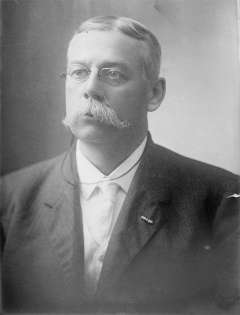
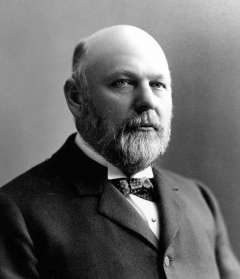 |
Private ventures to develop water resources for irrigation had mixed results in the 19th century. Hispanic farmers who planted gardens to supply Fort Laramie with vegetables pioneered irrigation in Wyoming. Their simple ditches running from primitive catch-dams along the Laramie River are generally considered part of the first irrigation project in Wyoming.
Mormon colonies built some of the more successful privately-financed irrigation projects in Wyoming. Most of these were for irrigating only subsistence crops, not for commercial agriculture. Through cooperative construction, with no labor costs, the colonies constructed a series of ditches and laterals to bring water from the Big Horn River and its tributaries to the dry lands of the northern Big Horn Basin. Other projects required extensive financial investment to pay for labor.
The Carey Act
By the 1890s, Westerners realized that substantial outlays of capital would be needed to develop the region’s precious water. Consequently, Westerners interested in irrigation met in what were called irrigation congresses, with the goal of informing the public and lobbying Congress for a federal role in bringing water to dry lands of the West.
Wyoming U.S. Senators Francis E. Warren and Joseph M. Carey, in association with experts such as Elwood Mead, Wyoming’s state engineer—chief water officer—developed a plan for a greater federal role in water development. Congress passed the Carey Act on August 18, 1894.
Under its terms, each Western state would be eligible to acquire up to one million acres in public land from the federal government for free as long as the state would promise to put the proceeds from sale of the land into construction of water projects. In essence, the plan called for a federal land subsidy similar to the subsidy given by the federal government to the Union Pacific and Central Pacific in order to build the transcontinental railroad.
Few states took full advantage of the Carey Act’s terms. In most states, the most desirable public lands, near rivers and streams, were already homesteaded. Consequently, Wyoming, still sparsely populated, became the state taking the greatest advantage of the Carey Act.
George T. Beck, William F. Cody, and a number of investors formed the Shoshone Irrigation Company in the early 1890s with the goal of irrigating thousands of acres of land next to the Stinkingwater (later Shoshone) River in the northwest part of the Big Horn Basin. Cody, already successful as the world’s most famous showman with his Wild West show, provided the promotional cachet.
The company laid out the town named for the old scout—Cody, Wyoming—and set about selling lots and agricultural tracts while the expensive waterworks were being planned. Raising capital proved more difficult than the promoters initially expected. Few investors wished to put money into a project where the rate of return seemed nominal and the wait appeared to be measured in years rather than quarters.
Cody’s company was not the only one attempting to make profits from developing irrigation lands. Joseph M. Carey himself helped organize an irrigation company to develop land around what would become Wheatland, Wyoming. Unlike Cody’s project, Carey’s gained some measure of success. At least, the promoters did not lose money.
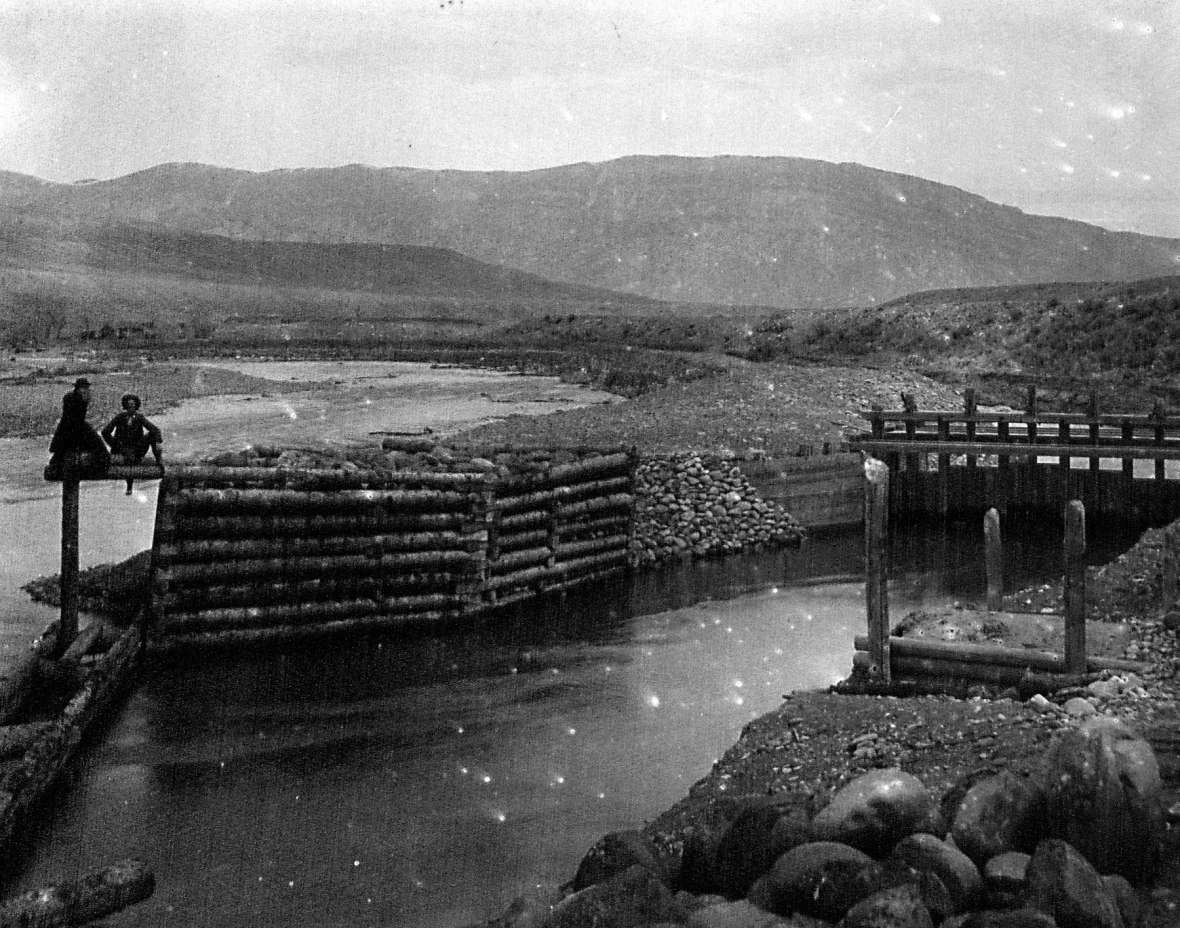
Dry farming attempts
Ultimately, the trouble came, not entirely from over-ambitious proposals boosted by promoters, but from the arid lands themselves. Few areas in Wyoming were suitable for agricultural crops. Without irrigation, it was assumed until the early 1900s, the land would be good only for grazing.
Around that time, the State and University of Wyoming teamed up to develop crops suitable for arid areas. Crop scientists like Dr. V. T. Cooke and Burt Buffum advocated deep-plowing and other innovations. Dry-farming techniques, along with unusually wet years in the early 1900s, encouraged homesteading in the counties along the eastern edge of the state.
The federal government enters in
Agronomists, however, recognized that dry farming never would work well on most of Wyoming’s arid lands, particularly once drier weather cycles returned. Irrigation would be the only dependable solution, according to most experts.
At the annual irrigation congresses held throughout the West in the 1890s, experts and promoters had gathered to organize efforts to bring irrigation to dry regions. John Wesley Powell of the U.S. Geological Survey and Elwood Mead, architect of Wyoming’s water laws, were among the guest speakers at such events. By 1900, however, most people at these conferences realized that the incentives of the Carey Act were simply not enough to promote investment in water projects. It was beginning to look as if only federal government had the capacity to make it work—because only the government could come up with sufficient funds to build projects and see them through to completion.
After persistent lobbying, Congress finally put the federal government directly into the irrigation business with passage of the Newlands Reclamation Act in 1902. Named for a Nevada congressman who was a strong advocate for the measure, the act passed Congress only after proponents compromised with Easterners who opposed the bill. Advocates promised that the projects built with federal funds would be “self-sufficient” and the bill included a provision requiring paybacks from irrigators into a revolving federal reclamation fund.
Further, to reconfirm the Jeffersonian ideal of small farmers gaining the advantages from the bill, Congress set several requirements: Each farmer in an irrigation district could apply federal water only to 160 acres and he or she had to live on the land being irrigated. Water rights would be granted to individual projects collectively. Specific amounts of water would be sold to "members" who, in theory, were paying back the costs of the project.
In return for Eastern support, Western legislators supported increased funding for river-dredging, flood control, and harbor improvements—projects to be built mostly in eastern seaport regions by the U. S. Army Corps of Engineers. The Corps also built dams along the Missouri River primarily to control downstream flooding.
The new agency was first called the Reclamation Service, but was later changed to the U. S. Bureau of Reclamation. The agency continues to operate today, though its dam-building phase passed long ago.
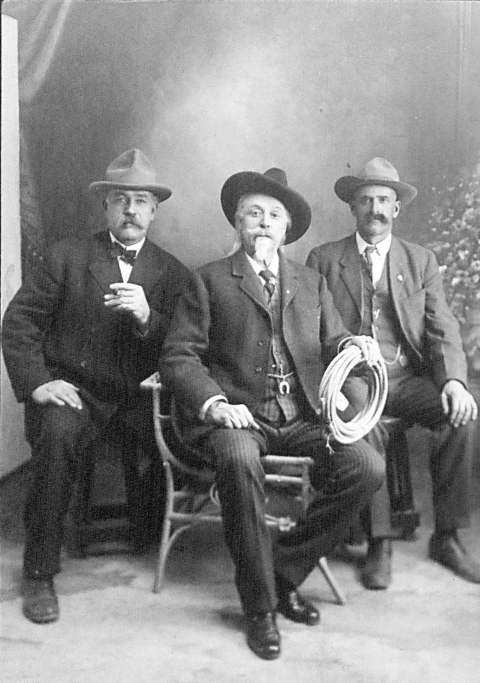
Throughout the 20th century, the two agencies—the Bureau of Reclamation in the western states and the Corps of Engineers mostly elsewhere—dueled for federal appropriations for water projects. Each had a bureaucracy to feed and each had substantial numbers of constituents, all lobbying their members of Congress to fund the respective agencies. The agencies competed, not only for tax dollars, but for authority to build on various rivers.
Wyoming’s dams
Several of the Bureau’s earliest projects were in Wyoming. One was Shoshone Dam, now Buffalo Bill Dam on the Shoshone River just above Cody, which the Bureau took over from the nearly bankrupt Shoshone Irrigation Company. The first dam in Wyoming built entirely by the Bureau was Pathfinder Dam on the North Platte, about 45 miles south of Casper. It was named for the “Great Pathfinder,” John C. Fremont.
Wyomingites always had substantial influence with the Bureau of Reclamation. Elwood Mead, Wyoming’s territorial and later state engineer—chief water officer—in the 1880s and 1890s, served as the commissioner of the bureau in the 1920s. (Lake Mead, behind Hoover Dam, a USBR project, was named in his honor). Later, University of Wyoming graduate and former Gillette schoolteacher Floyd Dominy served as commissioner, running the bureau during its last years of constructing massive dam and irrigation projects in the mid-20th century.
As years passed, the Bureau constructed a series of dams along the North Platte in Wyoming (Seminoe, Pathfinder, Kortes, Alcova, Glendo, Guernsey). In northeastern Wyoming, the bureau directed construction of Keyhole Reservoir; in southwestern Wyoming, Fontenelle and Flaming Gorge dams; in the northwest, Boysen and Buffalo Bill dams and, on the Big Horn River in Montana just downstream from Wyoming, Yellowtail Dam.
Changing roles
While the Bureau of Reclamation originally focused on bringing irrigation to arid lands in the West, the role changed as time passed. The new water supplies and hydroelectric power made available by many of the huge dams in the West helped major cities grow. The electricity generated by dams became a major revenue source for the bureau and important for urban development. Attractive too, to locals and tourists alike, were the recreation areas on the water behind the new dams. Water-skiing, boating and lake fishing all became popular in the West, largely thanks to the waters impounded behind bureau-built dams.
Costs never repaid
Over time, the promises of early promoters, at least with respect to revenues gained from selling water to farmers, were not realized. Reclamation districts, made up of farmers receiving water from the projects, never repaid the money spent to construct the dams and ditches. During drought and depression years, farmers got Congress to extend or even forgive the extensive debts.
A congressional study in the early 1980s revealed that the reclamation projects under the auspices of the bureau returned less than three percent of their costs to the federal treasury. At the same time, as the years went by, the acreage limitations had been relaxed to the point where, in some projects, all the water was controlled by only a few huge agricultural corporations.
The unreimbursed costs amounted to subsidies to those who eat vegetables and other food. One could argue that these subsides, along with substantial subsidies for cheap hydropower, offset the cost of the projects picked up by the taxpayers.
Meanwhile the West remains dry and, in Wyoming, crop agriculture remains scarce.
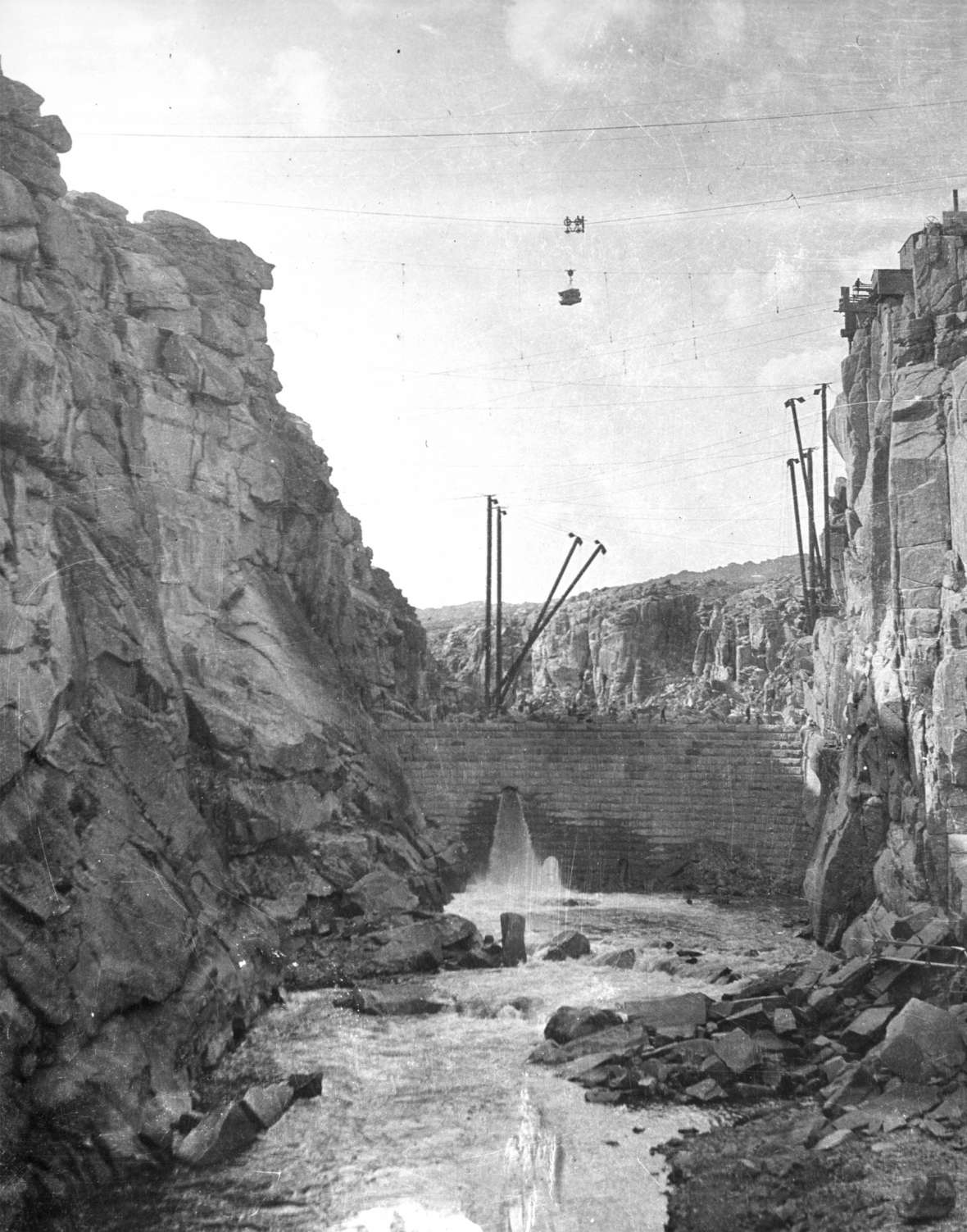
Editor’s note: An earlier version of this article was published by Dr. Roberts on his Wyoming Almanac and History of Wyoming pages. Special thanks to him for allowing its recycling here.
Resources
- Hundley, Norris, Jr. “Water and the West in Historical Imagination.” Western Historical Quarterly 27 (Spring 1996), 5-31.
- Kluger, James R. Turning on Water with a Shovel: The Career of Elwood Mead. Albuquerque: University of New Mexico Press, 1992.
- Pisani, Donald J. Water and American Government: The Reclamation Bureau, National Water Policy, and the West, 1902-1935. Berkeley: University of California Press, 2002.
- Reisner, Marc. Cadillac Desert: The American West and Its Disappearing Water. New York: Viking, 1986.
- Rowley, William D. Reclaiming the Arid West: The Career of Francis G. Newlands. Bloomington: Indiana University Press, 1996.
- Worster, Donald. Rivers of Empire: Water, Aridity and the Growth of the American West. New York: Pantheon, 1985.
Illustrations
- The photos of the beet farmer and of Sen. Carey are from Wyoming State Archives. Used with permission and thanks. The photo of Sen. Warren is from Wikipedia.
- The photos of Beck and Cody and of the headgate on the South Fork of the Shoshone are from the George T. Beck collection at the American Heritage Center at the University of Wyoming. Used with permission and thanks. The third man with Beck and Cody is Hank Dalton.
- The photo of Pathfinder Dam construction is from the Chuck Morrison collection at the Casper College Western History Center. Used with permission and thanks.
